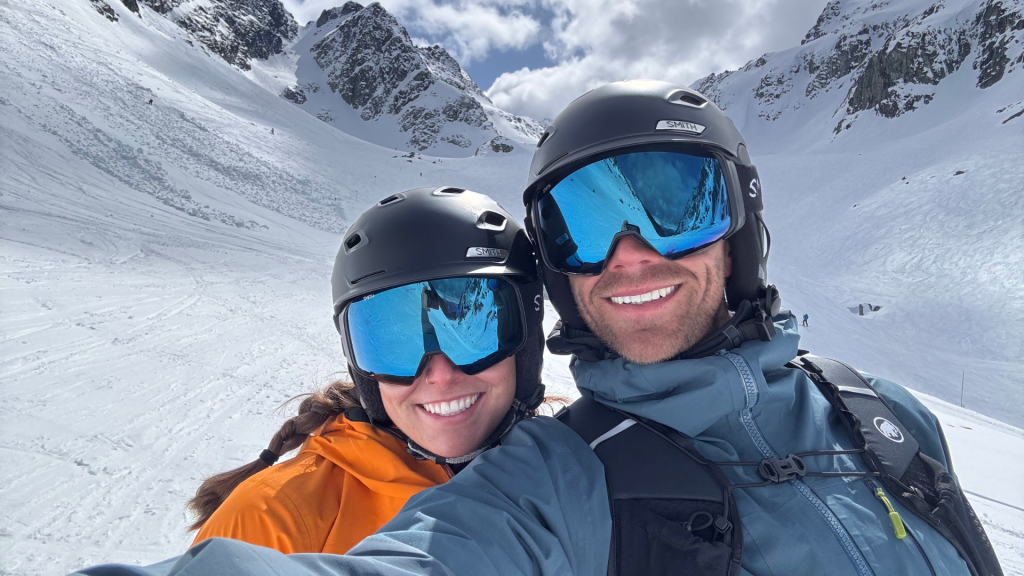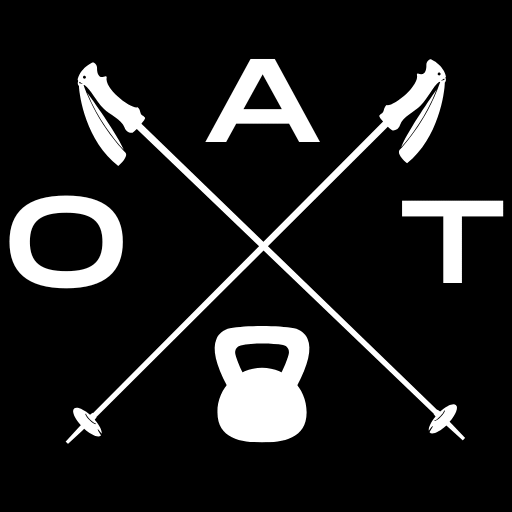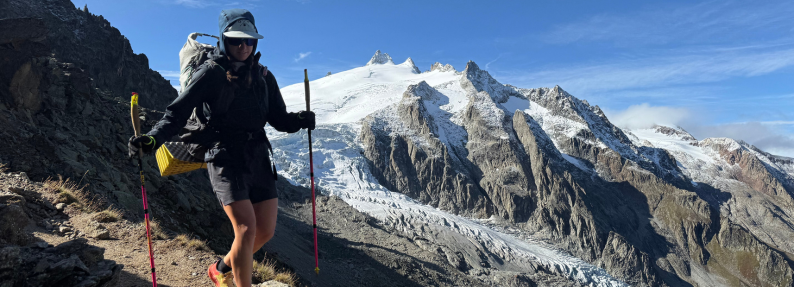Best Exercises for Skiers
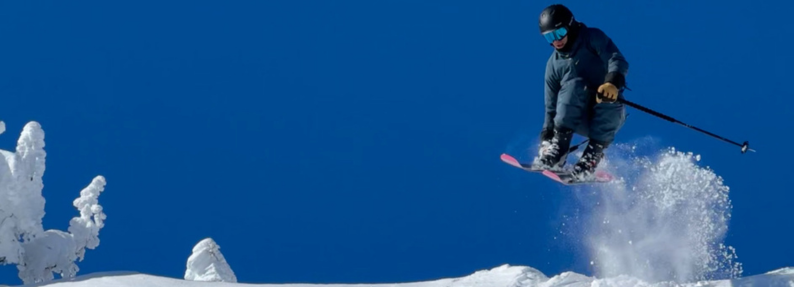
Best Exercises For Skiers
Build Strength, Control, and Longevity for the Slopes
If you’re looking for a quick list of “ski workouts” to do a few weeks before the lifts open, this probably isn’t it. Those short pre-season scrambles don’t do much once your quads are burning halfway through your first run.
But if you actually want to ski stronger, move better, and reduce your risk of injury — not just this season, but for many seasons to come — you’re in the right place.
These are the six cornerstone exercises I use in my own ski training and with hundreds of Outdoor Adventure Training athletes. They’re field-tested, backed by movement science, and built around what skiing really demands: strength in every plane, control under fatigue, and tissue resilience when the mountain starts fighting back.
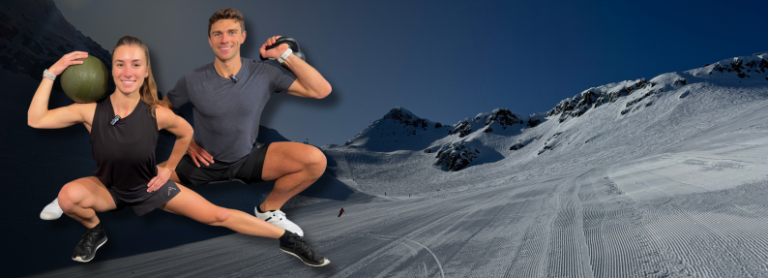
Goblet Squat
The Foundation of Ski-Specific Strength
If you can’t squat effectively, you’re going to have a hard time skiing effectively. This movement tells us a lot: posture, range of motion, neuromuscular control.
Before loading up any weight, assess your squat pattern. An overhead squat assessment can reveal the story behind your movement: where your body compensates, where mobility is limited, and which muscles are over- or underactive. Once your form’s solid, grab a kettlebell or dumbbell and start building real strength.
Goblet Squat Demo
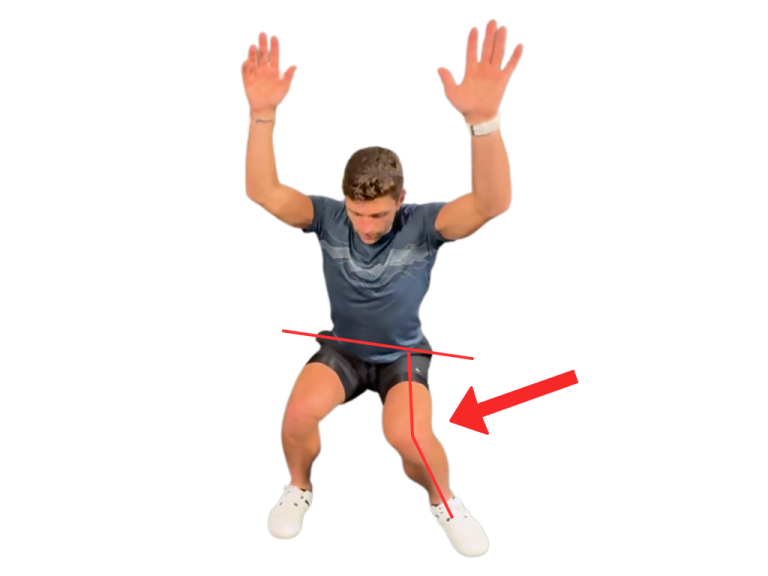
Watch out for movement pattern dysfunction! We recommend filming yourself performing an Overhead Squat Assessment to make sure your mechanics are rock solid.
Slow, controlled reps help build neuromuscular efficiency through the glutes and hamstrings. Tempo changes add endurance and power. Want more challenge? Try holding the weight on one side (unilateral load) to engage your obliques and lateral core which is exactly the kind of strength you need edge-to-edge on snow.
From there, mix it up. Move your stance laterally, shift foot positions, or add an unstable surface like a BOSU to simulate that uneven terrain feeling. Skiing isn’t one-dimensional — your training shouldn’t be either.
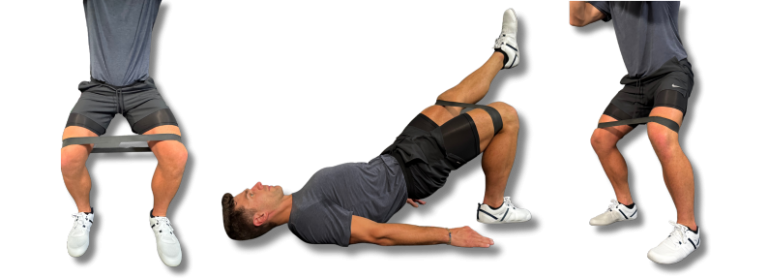
Activate those glutes! If you are struggling to feel your glutes to the squat, start with a simple glute bridge. Try adding a band to add more valgus resistance to get those glutes firing!
Reverse Step Up
Eccentric Quad Strength & Dorsiflexion Control
This is underrated for skier. The reverse step-up nails two of skiing’s biggest demands: eccentric quad loading and dorsiflexion control. Every time you decelerate or drive your knees forward in your boots, you’re using those same systems.
Find a step or box, plant your foot flat, and slowly bend the knee forward over your toes. Keep your heel down — if it wants to lift, that’s usually a calf tightness issue worth addressing. Drive back up through the quads with control.
The Reverse Step Up
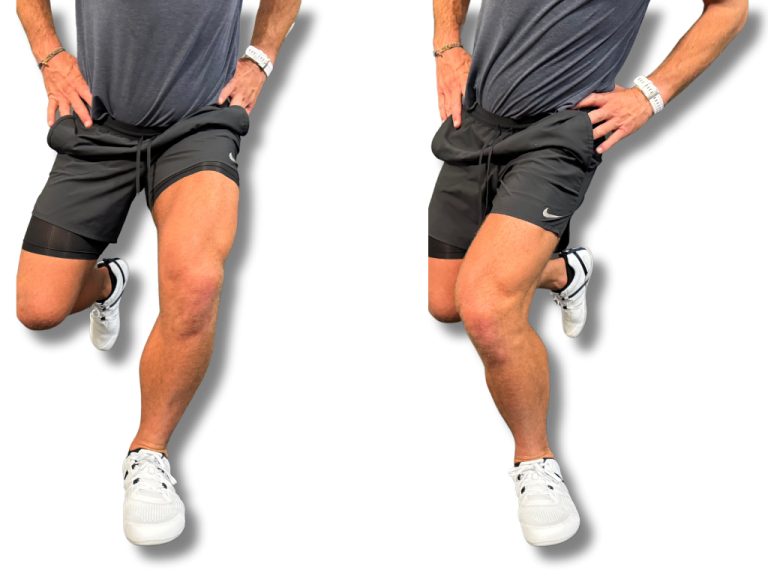
Don’t collapse! Even though this is a quad exercise, we MUST maintain external rotation and resist valgus movement of the knee.
Keep your hips level and your core braced. The big thing here is alignment: don’t let the knee collapse inward. Stay externally rotated at the hip and keep a subtle arch in the foot. That combination lights up the glute medius and reinforces the pattern that helps protect against ACL injury.
You can add a mini band pulling your knee inward (valgus pressure) to train your brain to fight that collapse — a trick that pays off big time on snow.
Deep Split Squat
Mobility, Strength & Ski Endurance
The deep split squat builds on the same eccentric loading as the reverse step-up but adds a crucial layer: hip mobility. Skiing has you stuck in hip flexion all day — car rides, lift rides, that crouched position on every turn. This exercise opens the hips back up while strengthening the quads and stabilizing the knee.
Start with a shorter stance and something for balance. As your control improves, lengthen the stride and drive forward slightly to load the quads deeper. The back heel stays lifted; both feet face forward.
Deep Split Squat Demo Video
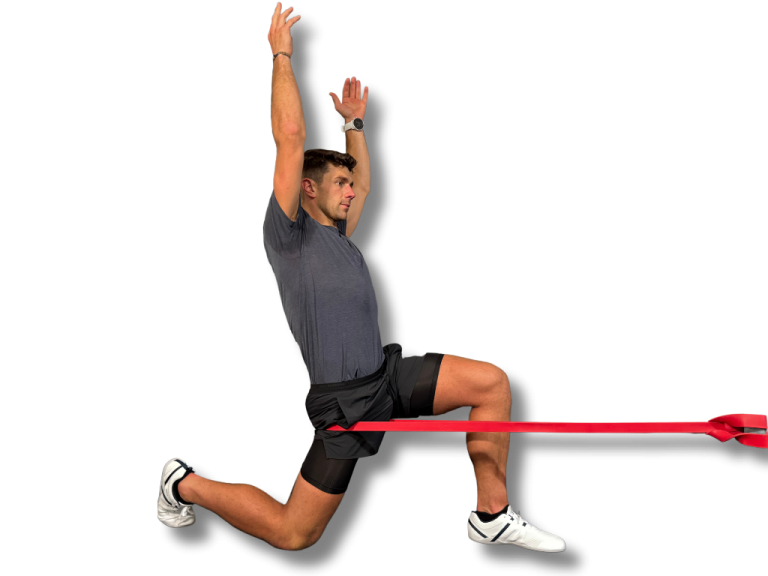
Hip Mobility matters… A LOT! If you struggle with the split squat, spend more time opening up the quads and hips.
As you get stronger, use a band pulling you slightly off balance or elevate one foot to challenge stability. These small progressions force your body to react — which is exactly what skiing is: constant, dynamic balance under load.
Keep an eye on your knee alignment here too. Subtle supination through the ankle and external rotation through the hip keeps everything stacked and powerful.
Single Leg Romanian Deadlift
Balance & Posterior Chain Strength
The single-leg RDL is one of the most important — and most butchered — exercises for skiers. It’s a hip hinge, not a squat or lunge. You’re training balance, posterior chain endurance, and your ability to stay neutral when everything feels off-center (aka skiing).
Start tall with your core engaged and a soft bend in your standing leg. Hinge at the hips while keeping the chest proud and spine long. Stop before you lose posture — if your back rounds, you’ve gone too far!
Single Leg RDL Demo Video
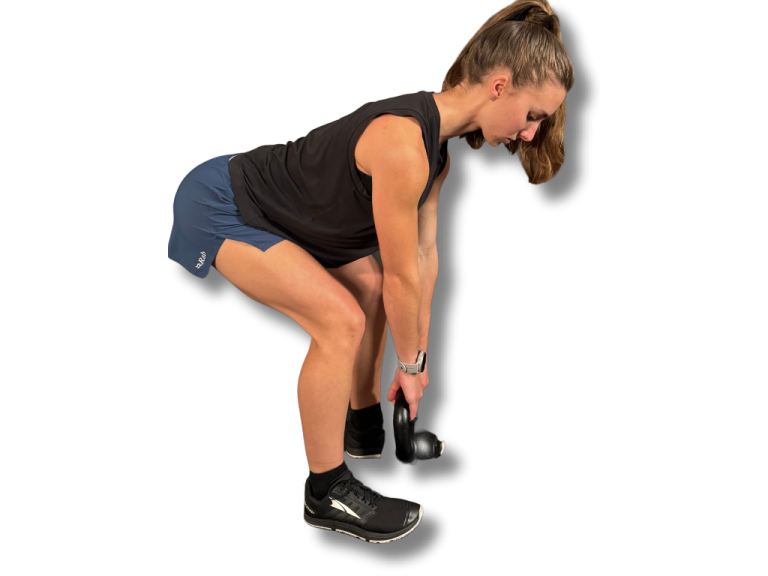
Hinge those hips! Standard deadlifts and glute bridges are excellent tools to dial in your mechanics before progressing to the single leg RDL.
Use poles, a wall, or a TRX for support early on. Over time, move to single-arm loads or unstable surfaces. Try integrating this into a compound move — like RDL to reverse lunge or RDL to curl + press — to train your coordination under fatigue.
Variations like rotational hinges or offset loads are great for building strength through the same multi-directional control that keeps you centered on your skis.
Pallof Press
Anti-Rotation & Stability
Every exercise before this has mentioned “keep your core engaged” — and this is where that concept becomes its own movement. The Pallof Press trains your ability to resist rotation, which is exactly what happens when your skis twist underneath you but your torso needs to stay facing downhill.
Attach a resistance band to your side, hold it at your chest, and press it straight out in front of you. The farther out you go, the harder it pulls. Maintain a slight posterior pelvic tilt (glutes on) and avoid letting your trunk rotate.
Pallof Press Demo
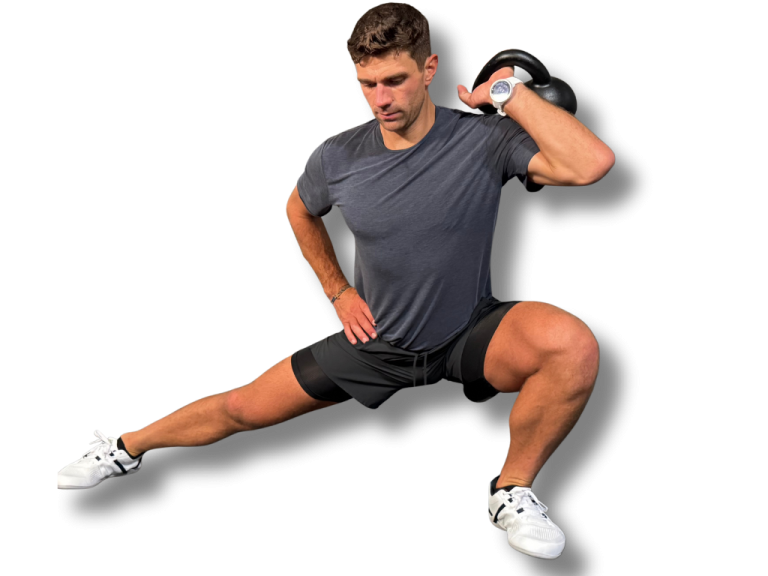
Adding weight to just one side makes any exercise and anti-rotation exercise by creating a unilateral load forcing you to stabilize and engage your core!
You’ll feel this along your obliques, glute med, and deep core stabilizers. Progressions? Balance on one leg, stand on an unstable surface, or move through a slow lateral step while keeping tension on the band.
Don’t get it twisted — rotation matters too! Mix in controlled rotations and chops to develop the rotational power that complements your anti-rotation control. The combination builds the trunk stability that holds your line through unpredictable terrain.
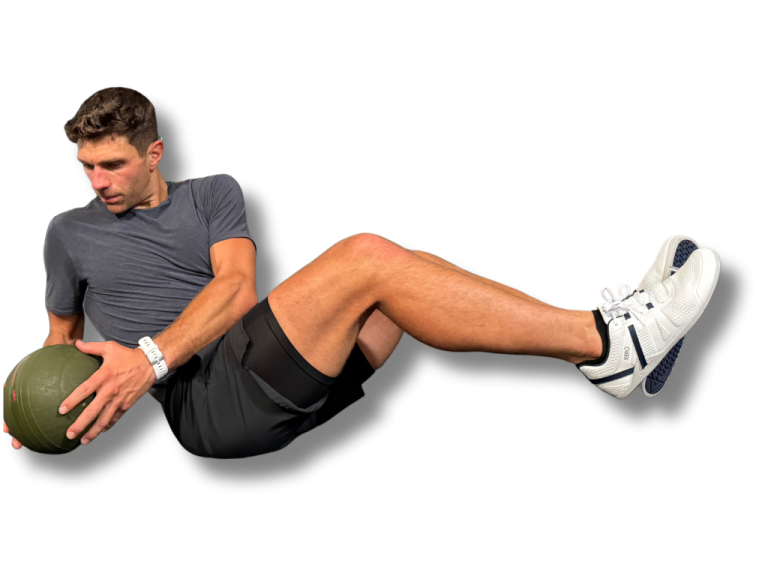
The Russian Twist is a classic rotational movement that allows for segmentation between the upper and lower body.
Stability Core Twist is a great example of a rotation-focused movement.
Ice Skaters
Plyometrics, Power & Agility
Skiing is impact-heavy. Every landing, bump, and transition sends force through your joints. Ice skaters teach your body to absorb and redirect that force with power and control.
Start with two-foot hops. Land softly, absorb through the whole foot, and stabilize before moving again. Then progress to single-leg hops, adding distance, direction changes, or unstable surfaces.
Ice Skaters Demo Video
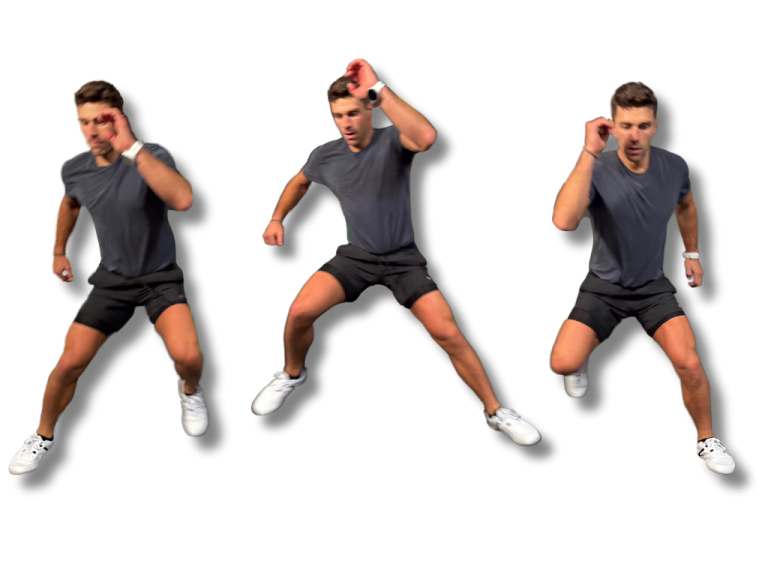
Control over Chaos! While speed and power are important, they are nothing without a strong stable foundation. Take your time and build up your plyometric base slowly.
This lateral plyometric movement mimics skiing’s side-to-side rhythm — stabilizing on one edge, then pushing off to the other. It’s one of the best drills for building reactive strength and tissue tolerance in the frontal plane.
Focus on quiet landings and balanced deceleration. Don’t chase speed — master control first, then add complexity.
Diversify Your Training
Progression & Regression
Every one of these exercises has variations that let you scale up, regress, or make things more ski-specific. Slow the tempo for eccentric control. Add instability for real-world balance. Rotate, hop, shift laterally — skiing demands all of it.
Train across planes, build your “brakes,” and teach your body to handle load under fatigue. That’s how you ski stronger, stay healthier, and make every run count.
Train in what we call a “Proprioceptively Enriched Environment”! Add instability to challenge full body control and balance.
Make any movement multiplanar! Add a lateral and rotational movements to your hops, step ups, and lunges. Skiing is not a linear sport, and your training must reflect that!
Ready to Level Up?
Leave the guess work to the Meteorologists…
If you want structure — not just a PDF or YouTube video — check out Powder Prep, our complete pre-season training program built specifically for skiers.
It’s periodized, progressive, and designed to build real durability so you can stay on snow longer and recover faster.
One-on-One coaching support and a community of skiers across the globe, all inside the OAT Fit App.
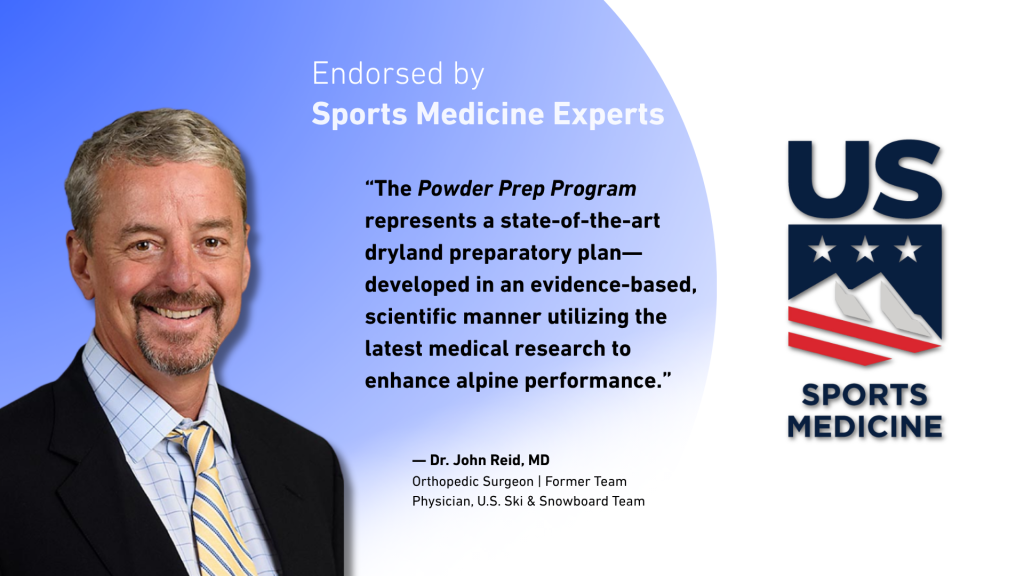
Uphill or Downhill?
We Can Help With Both
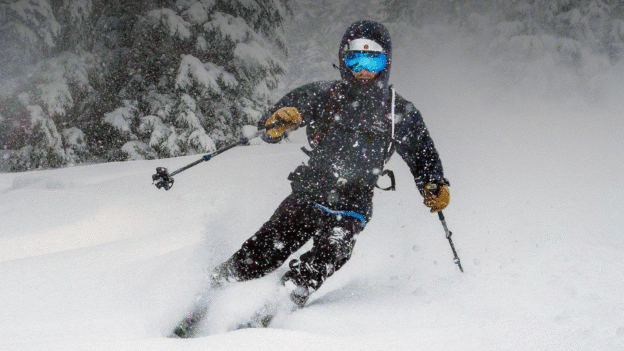
Powder Prep
Top-Rated Ski Conditioning Program to enhance performance and prevent injuries on the slopes.
Learn More
Alpine Touring
Build strength and endurance for backcountry skiing with a focus on uphill and downhill performance.
Learn MoreHave Questions?
We understand that starting a training program is a commitment you’re making, and we want to ensure that you get the most out of your experience with us. Ahead of registering for any of our programs, we’re available for a free 30-minute consultation to address any questions you may have.
